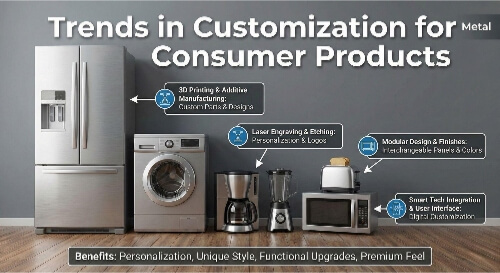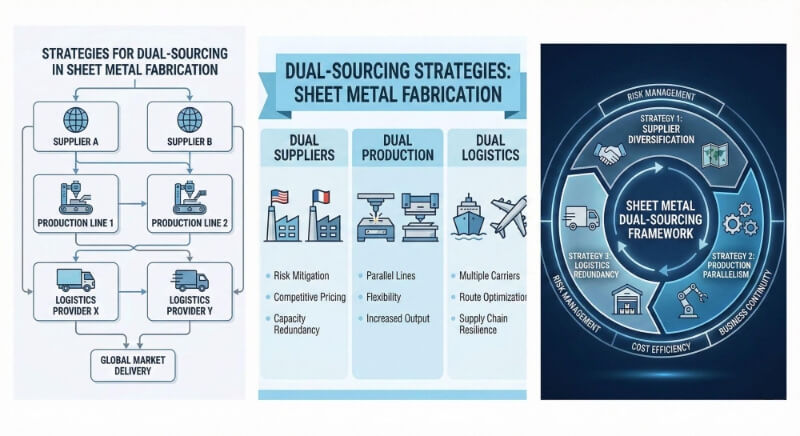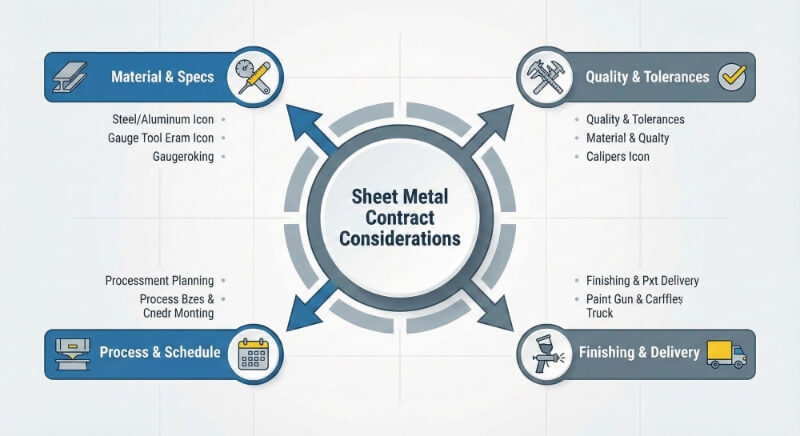يواجه كل مصنع قرارًا حاسمًا عند اختيار تقنية قطع المعادن. يمكن أن يؤدي ارتفاع تكاليف المواد وضيق جداول الإنتاج ومتطلبات الجودة إلى صعوبة الاختيار بين القطع بالبلازما والقطع بالليزر. تقدم كلتا التقنيتين مزايا مميزة، ولكن اختيار التقنية الخاطئة قد يؤثر على أرباحك النهائية.
بالنسبة للمشاريع السريعة التي تتطلب قطعًا أساسيًا على المعادن السميكة، يثبت القطع بالبلازما أنه أكثر فعالية من حيث التكلفة وأسرع. ومع ذلك، يتفوق القطع بالليزر في العمل الدقيق، حيث يوفر جودة حواف فائقة وتفاوتات أكثر دقة، مما يجعله مثاليًا للتصميمات المعقدة والمواد الرقيقة.
هل أنت مستعد لاستكشاف المقارنة التفصيلية؟ دعنا نفحص كيف تتراكم كل طريقة في مجالات الأداء الرئيسية التي تهم مشاريعك.
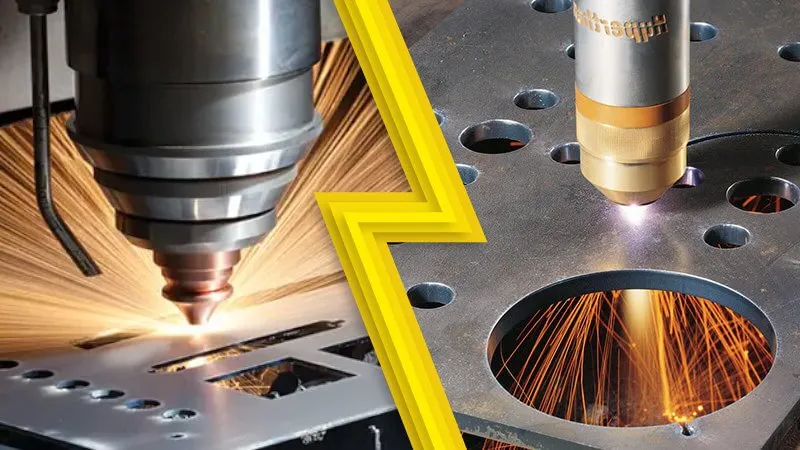
قطع البلازما
يجتمع الابتكار في قطع المعادن مع الكفاءة العملية. قطع البلازما حولت تصنيع المعادن الصناعية من خلال تقديم حلول سريعة وفعالة من حيث التكلفة لمعالجة المعادن السميكة. يفصل هذا القسم الجوانب الأساسية لتكنولوجيا البلازما.
ما هو القطع بالبلازما؟
يعمل القطع بالبلازما على تسخير الغاز المؤين بدرجة حرارة عالية لقطع المعادن الموصلة. تخلق هذه العملية قوسًا مركزًا تصل درجة حرارته إلى 40,000 درجة فهرنهايت، مما يجعله قويًا بما يكفي لقطع أقسى المعادن.
كيفية عمل القطع بالبلازما
تبدأ العملية عندما يتدفق الغاز المضغوط عبر فوهة ضيقة. يقوم قوس كهربائي بتأيين هذا الغاز، مما يخلق بلازما تذيب المعدن وتنفجر المادة المنصهرة. فكر في الأمر على أنه صاعقة صاعقة محكومة تقطع المعدن بدقة.
مزايا القطع بالبلازما
السرعة والكفاءة
يتحرك القطع بالبلازما بسرعة، خاصة على المواد السميكة. يمكنها قطع الفولاذ بقطر 2 بوصة أسرع بخمس مرات من الطرق الأخرى. تظل تكاليف التشغيل منخفضة بسبب الحد الأدنى من الأجزاء المستهلكة وأوقات الإعداد السريعة.
تعدد استخدامات المواد
تتعامل هذه التقنية مع مختلف المعادن الموصلة:
- فولاذ يصل سمكه إلى 6 بوصات
- ألومنيوم من جميع الدرجات
- النحاس والنحاس الأصفر
- الفولاذ المقاوم للصدأ
حدود القطع بالبلازما
المنطقة المتأثرة بالحرارة (HAZ)
تخلق الحرارة الشديدة منطقة HAZ أوسع من القطع بالليزر. وهذا يؤثر على:
- خواص المواد القريبة من القطع
- متطلبات ما بعد المعالجة
- الجودة الإجمالية للقطعة
مشكلات الدقة
يُظهر القطع بالبلازما قيودًا في العمل التفصيلي:
- عرض الشق الأوسع من القطع بالليزر
- أقل دقة في الأنماط المعقدة
- قد تحتاج الحواف الزاويّة إلى عمليات ثانوية
- الحد الأدنى لقطر الفتحة مقيد بسُمك المادة
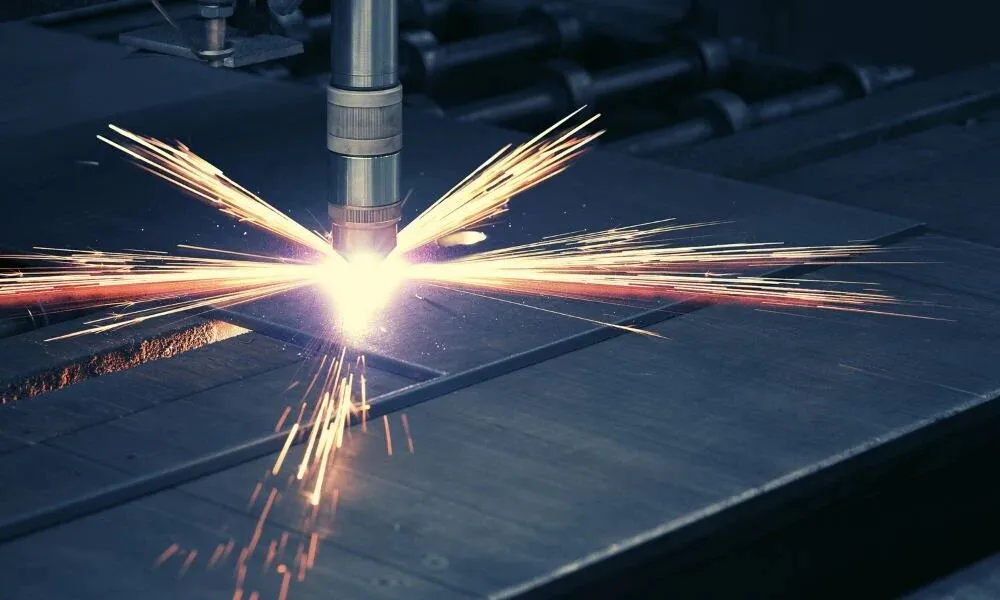
القطع بالليزر
يتطلب التصنيع الحديث الدقة، ويستكشف هذا القسم كيف تلبي تقنية الليزر هذه الاحتياجات. القطع بالليزر يمثل ذروة الدقة في تصنيع المعادن، حيث يوفر إمكانات تحول التصميمات المعقدة إلى واقع ملموس.
ما هو القطع بالليزر؟
يستخدم القطع بالليزر طاقة ضوئية مركزة لإذابة المواد أو حرقها أو تبخيرها بدقة متناهية. تخلق هذه التقنية شعاعًا من الضوء المركز الساخن بما يكفي لقطع المواد المختلفة مع الحفاظ على دقة استثنائية.
كيفية عمل القطع بالليزر
يولد الليزر عالي الطاقة شعاعاً ضوئياً مكثفاً. يركز هذا الشعاع من خلال البصريات على سطح المادة، مما يخلق منطقة تسخين موضعية. تقوم المرايا التي يتم التحكم فيها بالكمبيوتر بتوجيه الشعاع على طول مسارات مبرمجة، مما يضمن إجراء عمليات قطع دقيقة.
مميزات القطع بالليزر
دقة ودقة عالية
يحقق القطع بالليزر دقة ملحوظة:
- تفاوتات تفاوتات ضيقة تصل إلى ± 0.004 بوصة
- أنماط معقدة وتفاصيل معقدة
- جودة ثابتة في جميع مراحل الإنتاج
حواف نظيفة وأقل قدر ممكن من النفايات
تحقق هذه التقنية نتائج فائقة:
- حواف مقطوعة بلمسة نهائية عاكسة
- أدنى حد من تشوه المواد
- تقليل الحاجة إلى التشطيب الثانوي
- انخفاض معدلات الخردة
حدود القطع بالليزر
القيود المادية
لا تعمل جميع المواد بشكل جيد مع القطع بالليزر:
- قيود السُمك للمعادن
- تحتاج المواد العاكسة إلى معالجة خاصة
- تنتج بعض المواد أبخرة خطرة
ارتفاع التكاليف الأولية
تشمل الاعتبارات المالية ما يلي:
- استثمار كبير في المعدات
- متطلبات الصيانة الدورية
- استهلاك أعلى للطاقة
- تدريب المشغلين المتخصصين
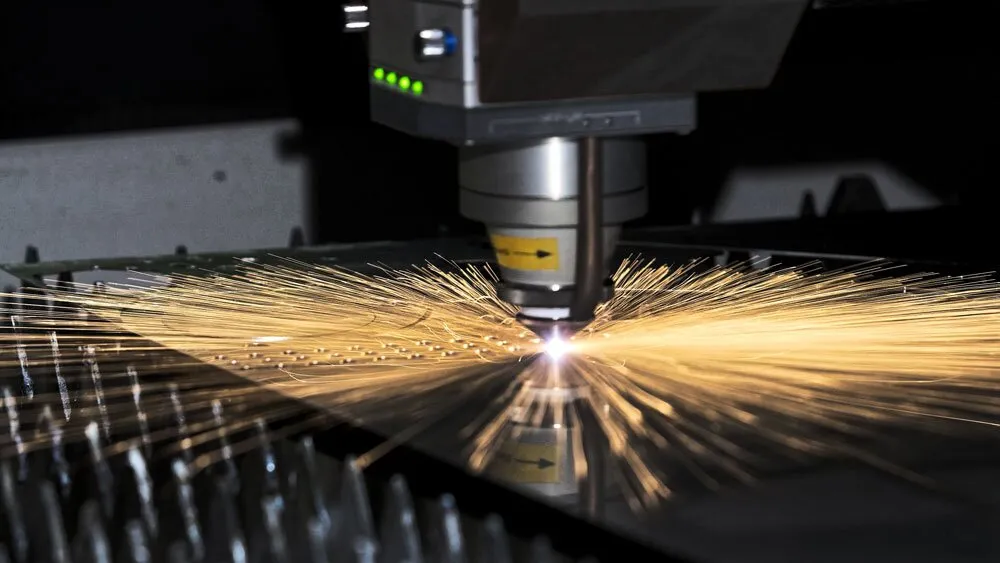
المقارنة بين القطع بالبلازما والقطع بالليزر
تلعب تقنية قطع المعادن دورًا مباشرًا في جودة القِطع والتكلفة والجداول الزمنية للإنتاج. يساعد تحليل الاختلافات بين البلازما والليزر في تحديد الطريقة التي تناسب احتياجات المشروع المحددة. إليك ما يميزهما.
دقة
يحقق القطع بالليزر مستويات دقة تبلغ ± 0.004 بوصة، مما يجعله مثاليًا للتصميمات المعقدة. تخلق الحزمة المركزة زوايا حادة وحواف مستقيمة. بالنسبة لأغلفة الإلكترونيات أو الأجزاء الطبية، فإن هذا المستوى من التفاصيل يثبت أنه بالغ الأهمية.
يصل القطع بالبلازما إلى تفاوت ± 0.02 بوصة. على الرغم من أن هذه الدقة أقل دقة، إلا أنها تعمل بشكل جيد مع الأجزاء الهيكلية والإطارات و اقواس. يؤثر الشق العريض على جودة الحافة ولكنه نادراً ما يؤثر على الوظيفة.
مادة
تقطع أشعة الليزر الفولاذ والألومنيوم والفولاذ المقاوم للصدأ بفعالية. تترك الحزمة المركّزة بالحرارة أقل قدر من الالتواء. على الفولاذ الكربوني الذي يقل عن 1 بوصة، تظل حواف القطع نظيفة وخالية من الخبث.
تتعامل البلازما مع المعادن الموصلة مثل الفولاذ والألومنيوم. وهي تتفوق مع الأسطح الصدئة أو المطلية. يزيل انفجار الغاز المتأين الملوثات السطحية أثناء القطع.
سرعة
سرعات القطع السريعة تميز البلازما عن المواد السميكة. على الفولاذ مقاس 1 بوصة، تقطع البلازما بسرعة 20 بوصة في الدقيقة. وهذا يجعلها مثالية لعمليات الإنتاج بكميات كبيرة من القِطع الثقيلة.
يؤدي القطع بالليزر إلى قطع المواد الرقيقة، حيث يصل إلى 150 بوصة في الدقيقة على الفولاذ عيار 18. يتحرك الشعاع المركز بسرعة عبر الصفائح المعدنية. بالنسبة للقطع التفصيلية التي تقل عن 1/4 بوصة، يقلل القطع بالليزر من وقت الإنتاج.
توافق المواد العاكسة
يقطع ليزر الألياف النحاس والنحاس الأصفر والألومنيوم دون مشاكل. يحافظ شعاع الطول الموجي 1070 نانومتر على ثباته على الأسطح اللامعة. تعاني ليزرات ثاني أكسيد الكربون مع هذه المواد، مما يتسبب في حدوث قطع غير متناسق.
سماكة الورقة
تتعامل أنظمة البلازما مع المعادن من عيار 26 حتى سمك 6 بوصات. يقوم قوس البلازما القوي بقطع الصفيحة الفولاذية السميكة بسلاسة. تعمل العديد من الأنظمة بشكل أفضل بين 1/2 بوصة و2 بوصة.
يُظهر القطع بالليزر نتائج مثالية لما يصل إلى 1 بوصة من الفولاذ الطري. يتم قطع المواد الرقيقة حتى 0.02 بوصة بشكل نظيف. بعد 1 بوصة، تنخفض جودة القطع وتتباطأ السرعة بشكل كبير.
يكلف
يوفر القطع بالبلازما تكاليف أقل للمعدات، بدءًا من حوالي $5000 للأنظمة الأساسية. تظل تكاليف التشغيل منخفضة بسبب المواد الاستهلاكية البسيطة. تظل احتياجات الصيانة في حدها الأدنى.
تتطلب أنظمة الليزر استثمارًا أعلى، غالبًا $100,000+. ومع ذلك، فإن دقتها وتعدد استخداماتها يعوضان التكاليف بالنسبة للعمليات ذات الحجم الكبير. تشمل تكاليف التشغيل الغازات والصيانة المتخصصة.
الوظائف الإضافية
أنظمة الليزر العلامة, النقش والحفر والحفر الأجزاء أثناء القطع. وهذا يضيف قيمة من خلال ترقيم الأجزاء أو وضع العلامات التجارية. تتعامل الأنظمة الحديثة أيضًا مع قطع الأنابيب وشطفها.
تركز وحدات البلازما فقط على مهام القطع. وعلى الرغم من بساطتها، إلا أنها توفر أداءً موثوقًا لاحتياجات القطع المباشرة. توفر بعض الأنظمة المتطورة إمكانية الشطف الأساسية.
القطع بالبلازما مقابل القطع بالليزر : مقارنة سريعة
يقدم جدول المقارنة أدناه نظرة عامة سريعة على الاختلافات.
| الميزة | قطع البلازما | القطع بالليزر |
|---|---|---|
| دقة | ± 0.02 بوصة | ± 0.004 بوصة |
| أفضل المواد | الفولاذ والألومنيوم والمعادن الموصلة والأسطح الصدئة/المطلية | الفولاذ والألومنيوم والفولاذ المقاوم للصدأ والنحاس والنحاس الأصفر والنحاس الأصفر |
| السرعة القصوى (فولاذ 1 بوصة) | 20 بوصة/دقيقة | 3 بوصات/دقيقة |
| السرعة القصوى (قياس 18) | 100 بوصة/دقيقة | 150 بوصة/دقيقة |
| نطاق السُمك | عيار 26 - 6 بوصات | 0.02 - 1 بوصة |
| تكلفة المعدات | $5,000+ | $100,000+ |
| جودة الحافة | جيد | ممتاز |
| الوظائف الإضافية | الشطف الأساسي | الوسم، والنقش، والحفر، والحفر، والحفر، وقطع الأنابيب، والشطف |
| المنطقة المتأثرة بالحرارة (HAZ) | أكبر | أصغر |
| براعه | أكثر تنوعاً للمواد السميكة والأسطح الخشنة | أكثر دقة للتصميمات المعقدة والمواد الرقيقة |
| صيانة | تتطلب صيانة أكثر تواتراً بسبب الأجزاء المستهلكة | تتطلب صيانة أقل |
| مستوى الضوضاء | أعلى | أكثر هدوءاً |
| تأثير بيئي | أعلى بسبب غاز وأبخرة البلازما | أدنى |
القطع بالبلازما مقابل القطع بالليزر : أيهما أفضل؟
ويعتمد الاختيار بين الليزر والبلازما على ثلاثة عوامل رئيسية: سُمك المادة والدقة المطلوبة وميزانية الإنتاج. تجلب كل طريقة مزايا متميزة تتناسب مع احتياجات التصنيع المختلفة.
للمواد الرقيقة (أقل من 1 بوصة)
يأخذ القطع بالليزر زمام المبادرة عند العمل مع:
- أجزاء الصفائح المعدنية (0.02-1 بوصة)
- مكونات دقيقة (± 0.004 ″)
- تصميمات معقدة ذات زوايا ضيقة
- الأجزاء التي تحتاج إلى حواف نظيفة
- متطلبات متعددة الوظائف (القطع + الوسم)
للمواد السميكة (أكثر من 1 بوصة)
أثبت القطع بالبلازما فعالية أكبر في:
- صفيحة ثقيلة (1-6 بوصة)
- مركبات اساسيه
- عمليات الإنتاج بكميات كبيرة
- أنماط القطع الأساسية
- المشاريع ذات الميزانيات المحدودة
تحليل التكاليف والفوائد
قم بتحليل قرارك من خلال هذه الأسئلة:
- ما هي سماكة المادة المعتادة لديك؟
- هل تؤثر دقة الجزء على الوظيفة؟
- ما هو حجم إنتاجك الشهري؟
- هل تحتاج إلى عمليات ثانوية مثل الوسم؟
- ما هو نطاق ميزانية المعدات الخاصة بك؟
اختر البلازما للقطع القوي للمواد السميكة بتكاليف أقل. اختر الليزر للعمل الدقيق على المواد السميكة حيث تفوق الجودة الاستثمار الأولي.
خاتمة
يوفر كل من القطع بالبلازما والقطع بالليزر مزايا متميزة تناسب احتياجات التصنيع المختلفة. تتفوق البلازما في المواد السميكة والثقيلة بتكلفة أقل، بينما ينتج القطع بالليزر قطعًا دقيقة ذات حواف نظيفة. ويعتمد الاختيار الأمثل على عوامل مثل سُمك المواد، وتعقيد القطع، وحجم الإنتاج، والميزانية المتاحة.
تضمن لك قدراتنا التصنيعية المتقدمة في القطع بالبلازما، والقطع بالليزر، والقطع بالليزر، والتصنيع باستخدام الحاسب الآلي، وختم المعادن أن مشروعك يلبي المواصفات. سواءً كنت تحتاج إلى سرعة وفعالية تكلفة البلازما أو دقة القطع بالليزر، يمكن لفريقنا الهندسي مساعدتك في استكشاف الحل الأمثل لمشروعك القادم. اتصل بنا اليوم للبدء في العمل
الأسئلة الشائعة
ما الطريقة الأفضل للمواد السميكة؟
القطع بالبلازما هو الخيار الأفضل لقطع الألواح المعدنية السميكة التي تزيد عن 1 بوصة. يمكن لقوس البلازما القوي أن يقطع الفولاذ الثقيل والألومنيوم بسرعة وكفاءة مما يجعلها مثالية للمكونات الهيكلية والإنتاج بكميات كبيرة.
ما هي تدابير السلامة المطلوبة لكل طريقة؟
يتطلب القطع بالبلازما تهوية مناسبة بسبب الأبخرة، بالإضافة إلى معدات وقائية مثل الملابس المقاومة للهب وواقيات الوجه والقفازات. يشكل القطع بالليزر مخاطر من شعاع الضوء الشديد، لذا فإن نظارات السلامة والستائر الضوئية ومناطق العمل الخاضعة للرقابة ضرورية.
ما الذي يجب ألا تقطعه بقاطع البلازما؟
يجب عدم استخدام قواطع البلازما على المواد غير الموصلة للكهرباء مثل الخشب أو البلاستيك أو السيراميك، حيث يتطلب قوس البلازما وسطًا موصلًا ليعمل بفعالية. بالإضافة إلى ذلك، قد تتسبب المعادن العاكسة للغاية مثل النحاس والنحاس الأصفر في حدوث مشكلات مع أنظمة البلازما.
مهلا، أنا كيفن لي

على مدى السنوات العشر الماضية، كنت منغمسًا في أشكال مختلفة من تصنيع الصفائح المعدنية، وشاركت رؤى رائعة هنا من تجاربي عبر ورش العمل المتنوعة.
ابقى على تواصل

كيفن لي
لدي أكثر من عشر سنوات من الخبرة المهنية في تصنيع الصفائح المعدنية، وتخصصت في القطع بالليزر، والثني، واللحام، وتقنيات معالجة الأسطح. كمدير فني في شنغن، أنا ملتزم بحل تحديات التصنيع المعقدة ودفع الابتكار والجودة في كل مشروع.


